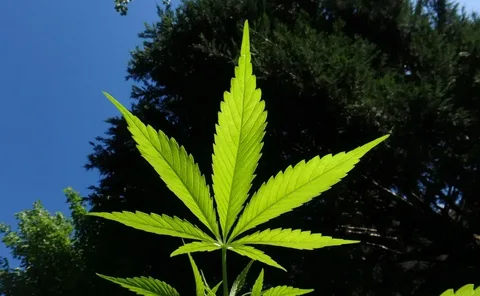For centuries, cannabis has been deeply woven into human history. Archaeological evidence shows that this plant was cultivated in ancient China as early as 4000 BCE for textiles, ropes, and medicinal preparations. Ancient texts from India describe its ritualistic and therapeutic uses, and the plant also traveled along the Silk Road, reaching the Middle East and Africa. Throughout history, cannabis was more than a crop; it became an integral part of various cultures, spiritual ceremonies, and traditional medicine systems.
In medieval Europe, cannabis found its place in pharmacopoeias and home remedies, prized for its anti-inflammatory and analgesic properties. It was only in the 20th century, with rising global regulations, that cannabis faced widespread prohibition, altering public perception from a revered herb to a misunderstood plant.
The Complex Botanical Profile of Cannabis
Coast mountain cannabis is a remarkably versatile plant. Its chemical profile features over a hundred unique compounds known as cannabinoids. Beyond the most famous compounds, there’s a rich tapestry of terpenes and flavonoids, which contribute to the plant’s aroma, flavor, and potential synergistic effects.
Cannabinoids: The Active Compounds
Cannabinoids interact with the body’s endocannabinoid system, a network that influences mood, appetite, pain response, and immune regulation. These compounds work together in what is known as the “entourage effect”, where the combined action may enhance therapeutic benefits.
Terpenes and Flavonoids: The Aromatic Architects
Terpenes are responsible for the plant’s distinct scent profiles, ranging from citrus and pine to floral and earthy notes. These compounds are also studied for their potential therapeutic properties, including calming, uplifting, or anti-inflammatory effects. Flavonoids add further complexity, offering antioxidant and anti-inflammatory contributions.
Industrial and Medicinal Uses of Cannabis
Cannabis is not limited to recreational contexts; its industrial and medical applications are vast.
Industrial Applications: Hemp Revolution
The fibrous stalks of cannabis are processed into hemp, a sustainable material used in textiles, paper, construction, and biodegradable plastics. Hemp seeds, rich in protein and omega-3 fatty acids, are increasingly popular in nutritional supplements and food products.
Hemp’s environmental benefits are significant: it requires minimal pesticides, grows rapidly, and helps improve soil health, making it an attractive choice for eco-conscious industries.
Therapeutic Potential: Ancient Wisdom Meets Modern Science
Modern research has reignited interest in medical cannabis potential. It has been studied for chronic pain management, appetite stimulation, and neurological disorders. Patients and clinicians continue to explore its role in enhancing quality of life, particularly when conventional treatments fall short.
Legal Landscape and Global Shifts
The legal status of cannabis has evolved dramatically in recent decades. Countries like Canada, Uruguay, and several U.S. states have legalized cannabis for recreational or medicinal use, while others remain cautious. This global shift reflects changing attitudes, supported by growing scientific research and advocacy for regulated, safe access.
Regulatory frameworks vary widely, from strictly controlled medical programs to broader legalization, emphasizing the need for informed policies that balance public health, safety, and economic opportunity.
Modern Trends and Innovations in the Cannabis Industry
The cannabis sector today is driven by innovation, research, and consumer education.
Product Diversity
Manufacturers have developed a wide range of infused products, from herbal teas and edibles to topical creams and essential oils. These offerings cater to diverse consumer needs, making cannabis more accessible and less stigmatized.
Cultivation Techniques
Advances in indoor farming and genetic research allow growers to tailor strains for specific profiles, enhancing potency, flavor, and therapeutic potential. Sustainable practices, including organic cultivation and renewable energy use, are reshaping the industry.
Digital Transformation
Technology plays a crucial role, from seed-to-sale tracking systems ensuring transparency to e-commerce platforms that broaden consumer reach. Digital education platforms also empower users to make informed choices, bridging the gap between science and daily life.
Public Perception and the Future of Cannabis
While misconceptions remain, public opinion about cannabis has shifted considerably. Educational campaigns and medical research have contributed to a more balanced narrative, emphasizing harm reduction, wellness, and the plant’s historical legacy.
The future of lucy in the sky strain appears rooted in responsible innovation, continued scientific exploration, and policies that recognize its therapeutic, economic, and ecological potential.
Conclusion: A Plant of Many Stories
Cannabis is more than a single narrative. It is an ancient plant now thriving in modern contexts, offering opportunities for health, sustainability, and cultural reflection. By honoring its past and embracing responsible advancement, we can ensure that cannabis continues to benefit communities worldwide.







